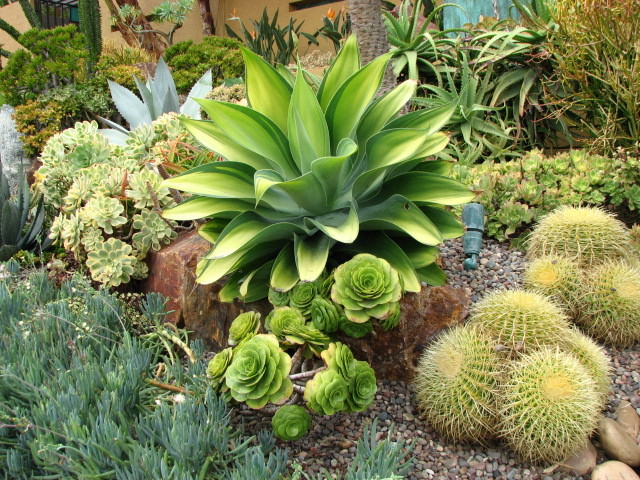
Plants cannot live without water, but the frequency with which they must receive it to stay alive varies greatly. Factors that influence a plant’s water needs include its age, growth rate, type of plant, strength level, type of soil and type of contents, whether in a container or in the soil. Environmental conditions such as temperature and relative humidity are also important. At one extreme are vulnerable, fast-growing plants, such as seedlings, which may need water several times a day. At the other extreme are succulent plants that store water and can live for several years without water.
Contents
Succulent Plants
Succulents are found in all hot desert regions of the world, except Australia, and use the strategy of storing water in the leaves, stems or roots to survive drought. Succulent plant expert Dr. Park Nobel discusses the water requirements of cacti in his book “Environmental Biology of Agaves and Cacti”. He lists three types of opuntia that have survived without water for three years. Note that for coastal deserts, recorded rainfall amounts can be misleading. In the coastal desert of northern Chile, for example, native cacti survive six years without rain, but are slightly moistened by periodic fogs. Opuntia spp. is hardy in U.S. Department of Agriculture hardiness zones 3b through 11, and some varieties have invasive tendencies.
Drought Tolerant Plants
In arid regions, native trees and shrubs can survive for long periods without rain. They depend on structural modifications such as waxy or hairy leaf coatings and reduced or absent leaves to help prevent plant water loss. Often they have deep roots to find deep soil moisture. Mesquite roots nearly 200 feet long have been recorded. Prolonged droughts starve established native plants of water for months. Phoenix, Arizona, had 143 days without rain in 2006; Tucson had 81 days without rain in 1984. In Texas, Lubbock received no rain for the entire year of 1956. One lesson from these examples is to use native plants in domestic landscapes to save water and preserve landscape viability. even during drought. Mesquite spp. is hardy in USDA zones 6B through 9B and some varieties have invasive tendencies.
Dormant Plants
Dormant plants can often go without water for a long period of time without using all their stored water and energy to the point of death. One method of overwintering geraniums (Pelargonium x hortorum) in cold winter areas is to dig up the plants and store them in a cool, dark place during the winter months. Geranium is hardy in USDA zones 10 to 11. Similarly, frangipani (Plumeria spp.), hardy in USDA zones 9 to 11, can be bare-rooted and stored all winter in a cool, dry place without water and without danger.
Plants with high water requirements
There is no hard and fast rule on how long it takes for broadleaf plants to die if you don’t water them. It depends a lot on the age of the plant, how fast it grows and how hot it is. For example, during the summer heat, large-leafed, fast-growing plants such as squash (Cucurbita pepo) need two to three times as much water to not only stay alive, but to produce a crop as they would in cold weather. Inattention for a day or two could be fatal to your vegetables. Remember, even well-watered, mature squash plants experience mid-day wilting in hot weather. Fast-growing seedlings of all kinds, especially in a well-drained mix without soil, need to be checked more than once a day as they use up seed reserves and create a new root system.

